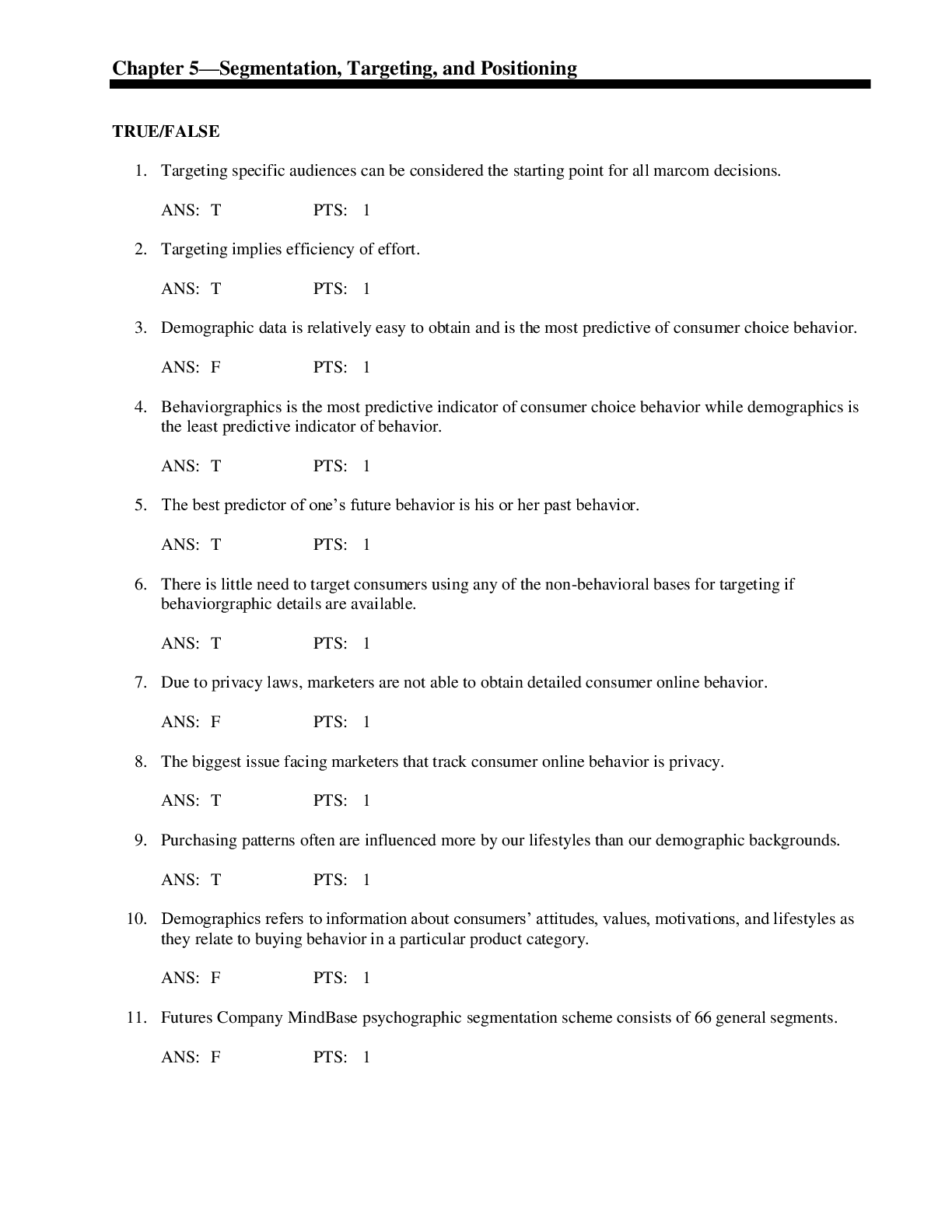*NURSING > QUESTIONS & ANSWERS > NR 509 week 2 Quiz questions and answers (New 2021/2022) (All)
NR 509 week 2 Quiz questions and answers (New 2021/2022)
Document Content and Description Below
NR 509 week 2 Quiz questions and answers (New 2021/2022) When performing a physical assessment, the first technique the nurse will always use A. Palpation B. Inspection C. Percussion D. Auscultati... on Correct Answer- B. Inspection The nurse is preparing to perform a physical assessment. Which statement is true about the physical assessment? The inspection phase: A. Usually yields little information B. Takes time and reveals a surprising amount of information C. May be somewhat uncomfortable for the expert practitioner D. Requires a quick glance at the patient's body systems before proceeding with palpation Correct Answer- B. Takes time and reveals a surprising amount of information The nurse is assessing a patient's skin during an office visit. What part of the hand and technique should be used to best assess the patient's skin temperature? A. Fingertips; they are more sensitive to small changes in temperature B. Dorsal surface of the hand; the skin is thinner on this surface than on the palms C. Ulnar portion of the hand, increased blood supply in this area enhances temperature sensitivity D. Palmar surface of the hand; this surface is the most sensitive to temperature variations because of its increased nerve supply in this area. Correct Answer- B. Dorsal surface of the hand; the skin is thinner on this surface than on the palms Which of these techniques uses the sense of touch to assess texture, temperature, moisture, and swelling when the nurse is assessing a patient? A. Palpation B. Inspection C. Percussion D. Auscultation Correct Answer- A. Palpation The nurse is preparing to assess a patient's abdomen by palpation. How should the nurse proceed? A. Palpation of reportedly tender areas are avoided because palpation in these areas may cause pain B. Palpating a tender area is quickly performed to avoid any discomfort that the patient may experience C. The assessment begins with deep palpation, while encouraging the patient to relax and to take deep breaths. D. The assessment begins with light palpation to detect surface characteristics and to accustom the patient to being touched. Correct Answer- D. The assessment begins with light palpation to detect surface characteristics and to accustom the patient to being touched. The nurse would use bimanual palpation technique in which situation? A. Palpating the thorax of an infant B. Palpating the kidneys and the uterus C. Assessing pulsations and vibrations D. Assessing the presence of tenderness and pain Correct Answer- B. Palpating the kidneys and the uterus The nurse is preparing to percuss the abdomen of a patient. The purpose of the percussion is to assess the ___________ of the underlying tissue. A. Turgor B. Texture C. Density D. Consistency Correct Answer- C. Density The nurse is reviewing percussion techniques with a newly graduated nurse. Which technique, if used by the new nurse, indicates that more review is needed? A. Percussing once over each area B. Quickly lifting be striking finger after each stroke C. Striking with the fingertip, not the finger pad D. Using the wrist to make the strikes, not the arm Correct Answer- A. Percussing once over each area When percussing over the liver of a patient, the nurse notices a dull sound. The nurse should: A. Consider this a normal finding B. Palpate this area for an underlying mass C. Reposition the hands, and attempt to percuss in this area again D. Consider this finding abnormal, and refer the patient for additional treatment Correct Answer- A. Consider this a normal finding The nurse is unable to identify any changes in sound when percussing over the abdomen of an obese patient. What should the nurse do next? A. Ask the patient to take deep breaths to relax the abdominal musculature B. Consider this finding as normal and proceed with the abdominal assessment C. Increase the amount of strength used when attempting to percuss over the abdomen D. Decrease the amount of strength used when attempting to percuss over the abdomen. Correct Answer- C. Increase the amount of strength used when attempting to percuss over the abdomen The nurse hears bilateral loud, long and low tones when percussing over the lungs of a 4 year old child. The nurse should A. Palpate over the area for increased pain and tenderness B. Ask the child to take shallow breaths and percuss over the area again C. Immediately refer the child because of an increased amount of air in the lungs D. Consider this finding as normal for a child this age and proceed with the examination Correct Answer- D. Consider this finding as normal for a child this age and proceed with the examination A patient has suddenly developed shortness of breath and appears to be insignificant respiratory distress. After calling the position and placing the patient on oxygen, which of these actions is the best for the nurse to take went further assisting this patient? A. Count the patient's respirations B. Bilaterally percuss the thorax, noting any differences in percussion tones C. Call for a chest x-ray study and wait for the results before beginning an assessment D. Inspect the thorax for any new masses and bleeding associated with respirations Correct Answer- B. Bilaterally percuss the thorax, noting any differences in percussion tones The nurse is teaching a class on basic assessment skills. Which of these statements is true regarding the stethoscope and its use? A. Slope of the earpieces should point posteriorly (toward to occiput) B. Although the stethoscope does not magnify sound, it does block out extraneous room noise C. Fit and quality of the stethoscope are not as important as its ability to magnify sound D. Ideal tubing length should be 22 inches to dampen the distortion of sound Correct Answer- B. Although the stethoscope does not magnify sound, it does block out extraneous room noise The nurse is preparing to use a stethoscope for auscultation. Which statement is true regarding the diaphragm of the stethoscope? The diaphragm: A. Is used to listen for high-pitched sounds B. Is used to listen for low-pitched sounds C. Should be lightly held against the persons skin to block out low-pitched sounds D. Should be lightly held again the person skin to listen for extra heart sounds and murmurs Correct Answer- A. Is used to listen for high-pitched sounds Before auscultating the abdomen for the presence of bowel sounds on a patient, the nurse should: A. Warm the endpiece of the stethoscope by placing it in warm water B. Leave the gown on the patient to ensure that she or he does not get chilled during the examination C. Ensure that the bell side of the stethoscope is turned to the on position D. Check the temperature of the room and offer blankets to the patient if she or he feels cold. Correct Answer- D. Check the temperature of the room and offer blankets to the patient if she or he feels cold. The nurse will use which technique of assessment to determine the presence of crepitus, swelling and pulsations? A. Palpation B. Inspection C. Percussion D. Auscultation Correct Answer- A. Palpation [Show More]
Last updated: 2 years ago
Preview 1 out of 76 pages
.png)
Buy this document to get the full access instantly
Instant Download Access after purchase
Buy NowInstant download
We Accept:

Reviews( 0 )
$12.00
Can't find what you want? Try our AI powered Search
Document information
Connected school, study & course
About the document
Uploaded On
Dec 11, 2022
Number of pages
76
Written in
Additional information
This document has been written for:
Uploaded
Dec 11, 2022
Downloads
0
Views
253

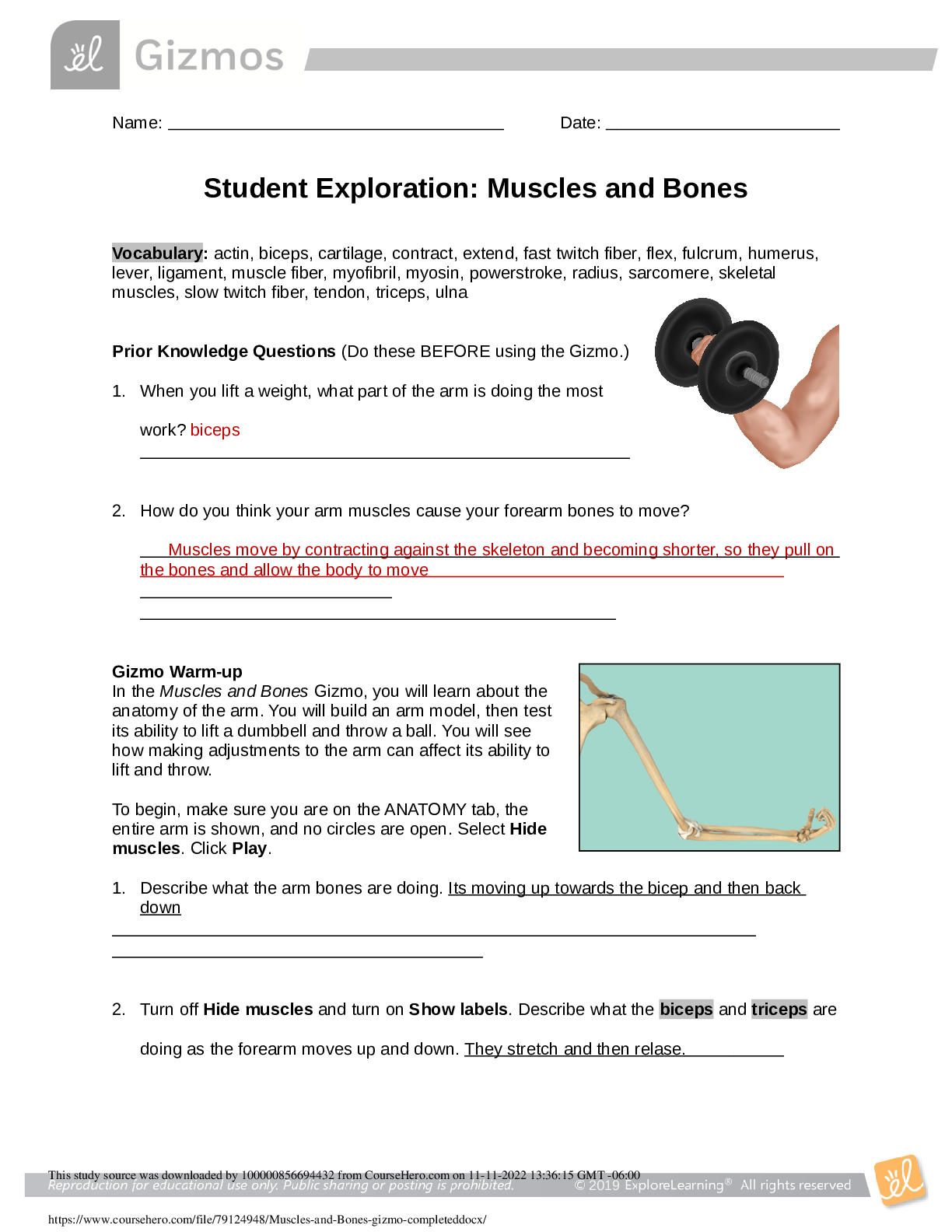


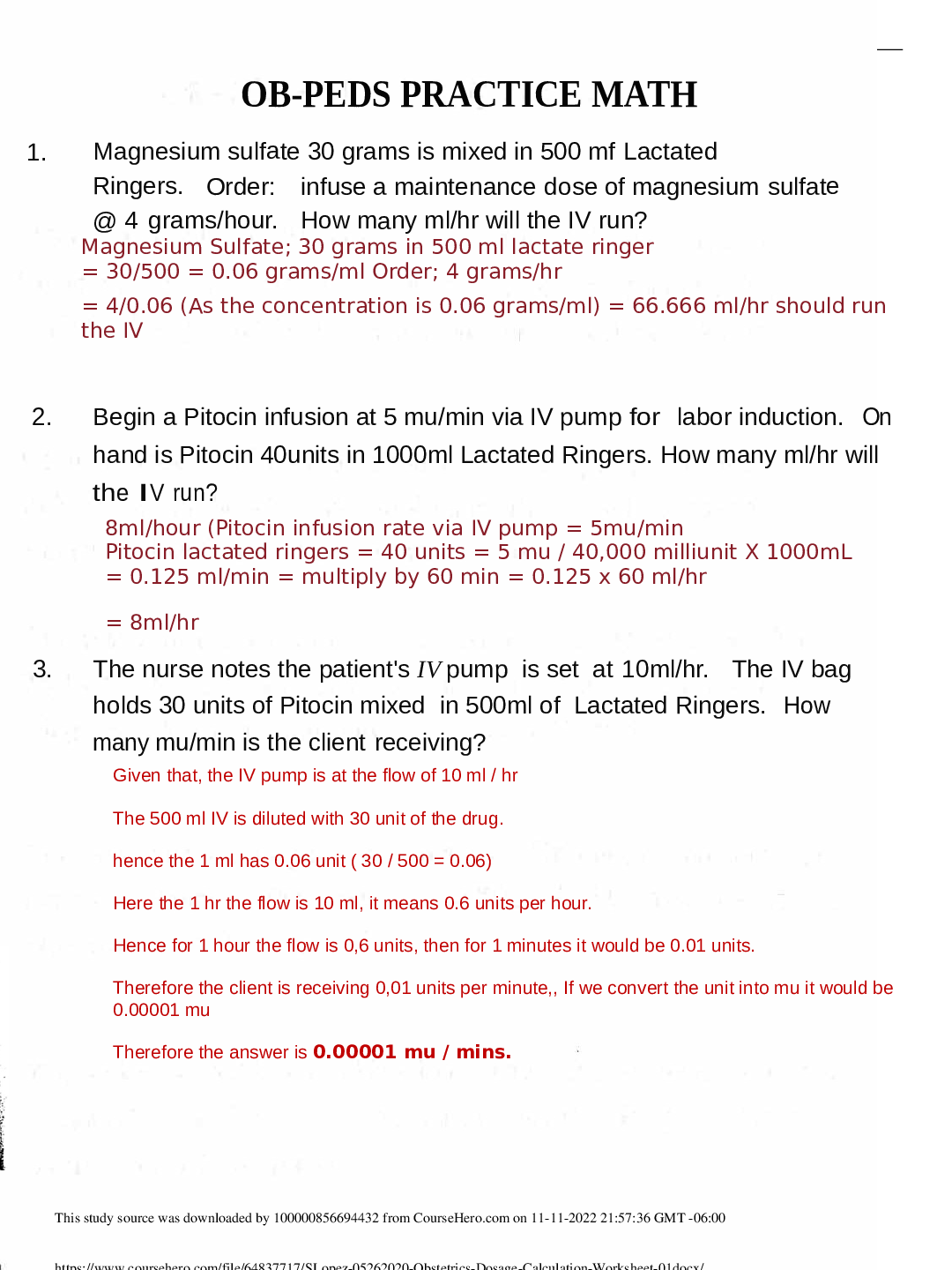

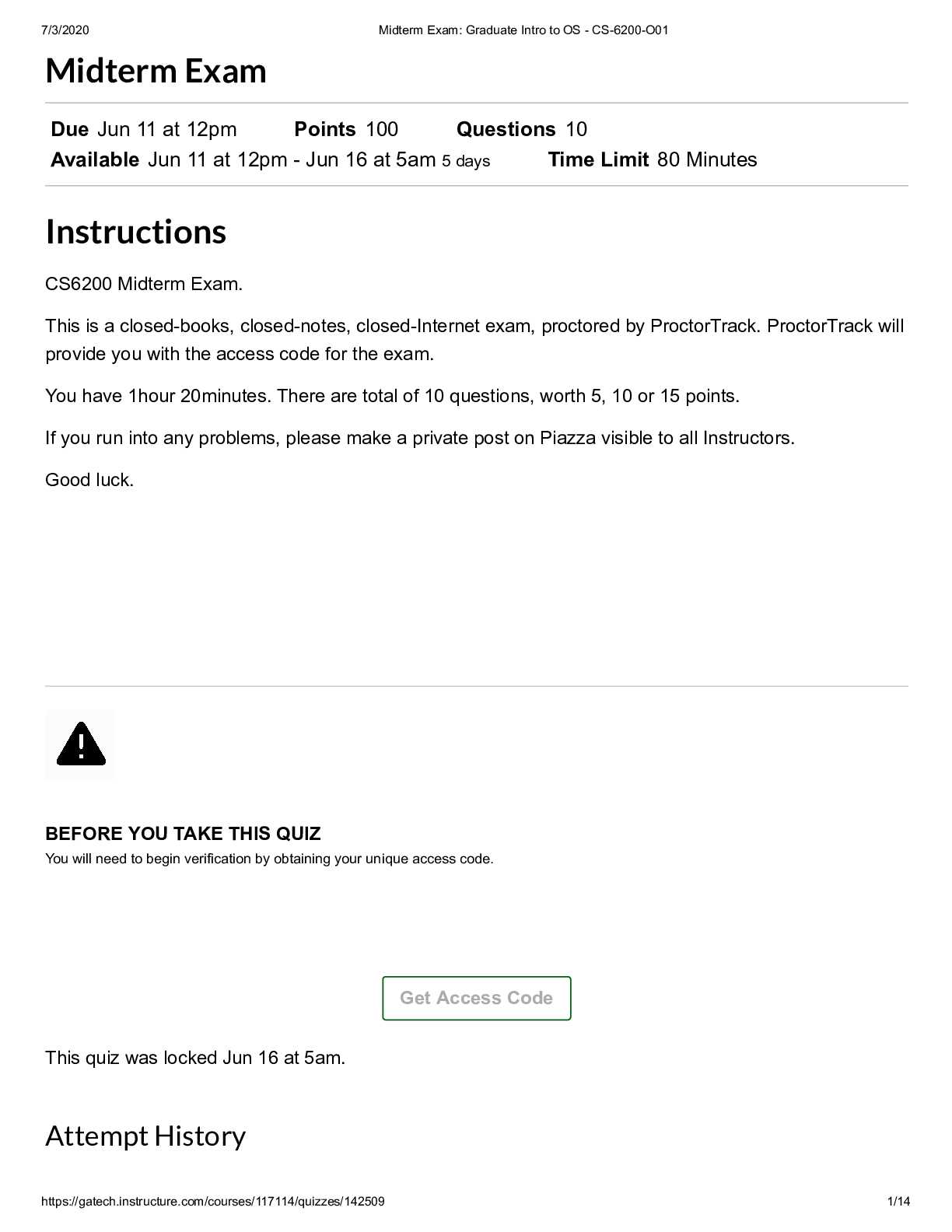
.png)
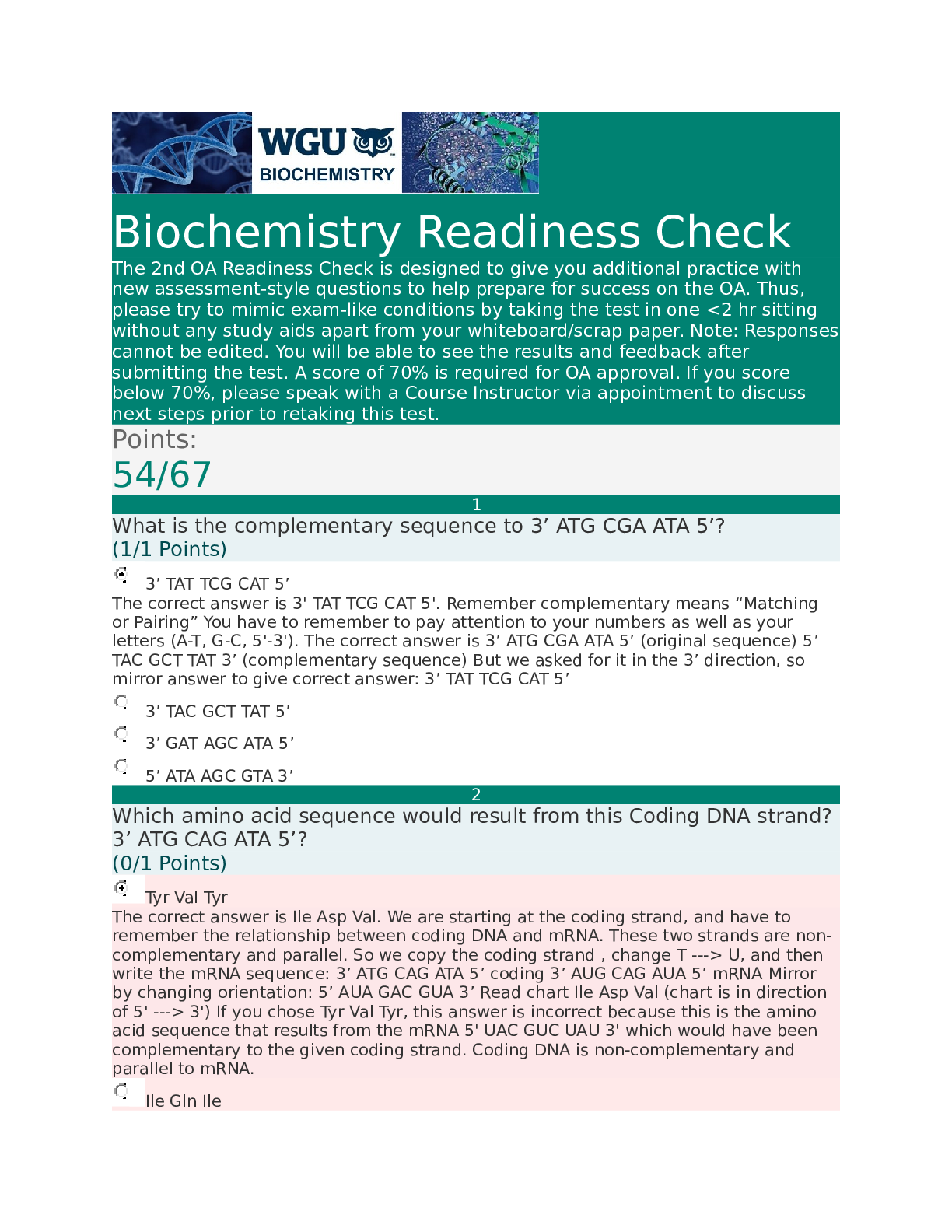
.png)

.png)
.png)


